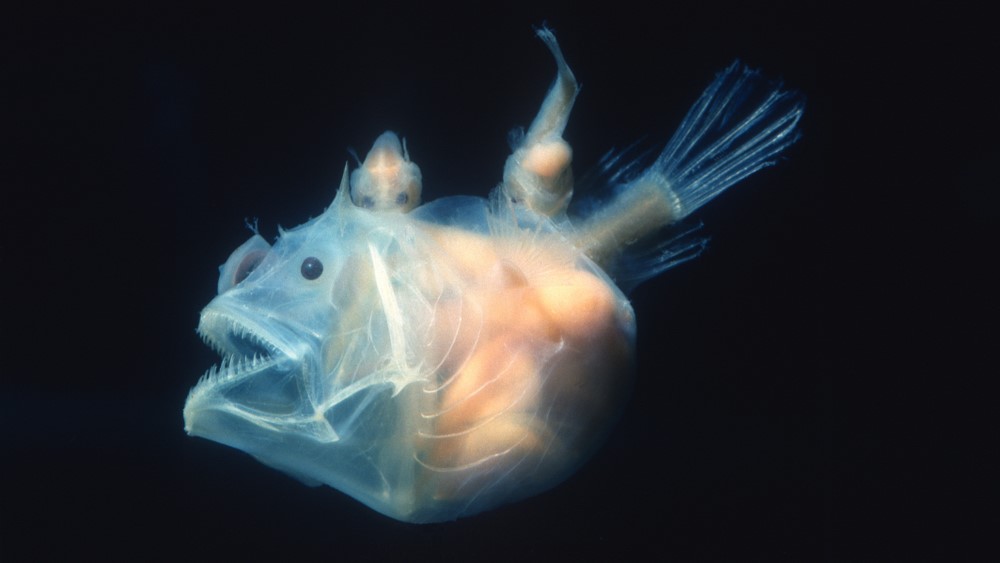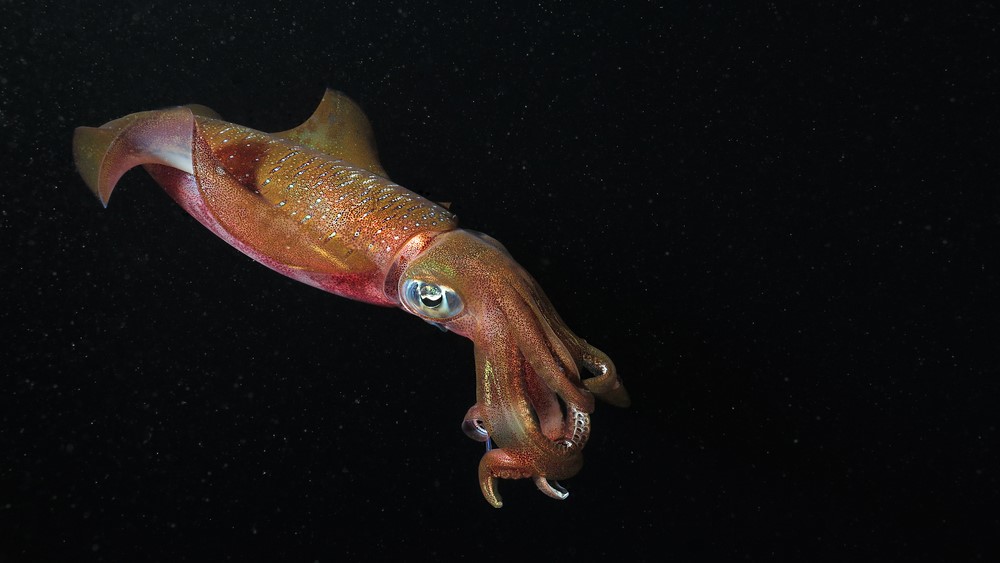'Parasitic provider of sperm on-tap': Why the sex lives of deep sea creatures demand extreme solutions
"In some species, only one male forms this lifelong union with a female, but in others, one female can have several accessory males dangling off her at any one time."
The deep sea, which encompasses waters below 660 feet (200 meters), is home to roughly a million species that have adapted to their extreme surroundings with equally extreme solutions to one of life's greatest trials: finding a mate. In the excerpt below from "Deep Sea: 10 Things You Should Know," ocean explorer Jon Copley takes a deep dive into the astonishing sex lives of animals living in the darkest corners of our planet.
All animals face similar trials in life: searching for food, avoiding being eaten, finding a mate and rearing their offspring, and then those offspring finding a home. And just as deep-sea animals overcome the challenge of finding food in lots of different ways, the same is true for those other challenges.
Populations of deep-sea animals often become sparse where food is scarce in the deep sea, which can make it difficult to meet a member of the opposite sex for reproduction. As a result, some deep-sea animals take an opportunistic, "have-a-go" approach to mating. In several species of deep-sea squids and octopuses, for example, males try to mate with any potential partner that they meet, regardless of their sex or even their species.
Some deep-sea animals take an opportunistic, "have-a-go" approach to mating.
Mating in squids involves the male passing a spearlike packet of sperm down a groove in one of their arms to stick on to a female's body, ready to release its contents when she produces her eggs. But male squid collected in nets from the deep sometimes have sperm spears stuck on their bodies too, in places where the jabs can't have been self-inflicted, indicating attempted mating by another male. Attempted interspecies mating has also been observed: in 1994 scientists diving in a Human-Occupied Vehicle filmed two male octopuses of different species trying to mate with each other, 2,500 meters (8,200 feet) down on the ocean floor of the eastern Pacific Ocean.
Related: Barreleye fish: The deep-sea weirdo with rotating eyes and a see-through head
As an alternative to indiscriminate mating, some deep-sea animals stay with a partner once they've met them. The sea cucumber Paroriza pallens looks like a moldy banana and spends its adult life crawling across the abyssal plains, leaving a track that can be seen in photographs of the seafloor. Sometimes the single track of a Paroriza meets another, and then the two trails continue side-by-side like a railway line. At the end of those tell-tale twin tracks there's a pair of Paroriza, now wandering across the abyssal plain together.
Paroriza sea cucumbers are hermaphrodites that develop male and female sex organs at the same time, but they can't self-fertilize. Instead, the sperm produced by each partner fertilizes the eggs produced by the other partner. Staying together means that one partner is always available to fertilize the other's eggs whenever they produce them — and the story of their encounter and subsequent fidelity is recorded in their trails on the soft mud of the abyssal plain.
Get the world’s most fascinating discoveries delivered straight to your inbox.
When it comes to keeping a male handy for fertilizing eggs, several deep-sea animals have evolved a more extreme solution. Wood-eating clams, bone-eating "zombie" worms, and some species of anglerfishes have tiny males that attach themselves to a female once they've found her, acting as standby "accessory males" to fertilize the female's eggs when needed. In some species of bone-eating worms, for example, one female can have a harem of a dozen or more males, each about a hundred times smaller than the female, hanging on to her with microscopic hooks.
About two dozen species of anglerfish that live in the deep sea also have accessory males to varying degrees. In some species, the smaller male attaches temporarily to a female, but he can swim off and hook up with another female. In other species, however, the male fuses his mouth onto the female's body in a kiss that lasts the rest of his life. The male's blood supply joins up with hers through his lips, and he can no longer leave her or feed himself: he becomes a parasitic provider of sperm on-tap, nourished by the female through their shared circulation as she continues to feed. In some species, only one male forms this lifelong union with a female, but in others, one female can have several accessory males dangling off her at any one time.
But there's a complication in such a permanent pairing. Fish have an immune system with two main parts like ours. The "innate" immune system produces general defenses to fight off infections, while the "adaptive" immune system recognizes and attacks any "foreign" substances, including cells that are genetically different to the rest of the body. That adaptive immune system is great for tackling would-be invaders, such as disease-causing bacteria, but is a problem when sharing a blood supply with a partner.
If we were to join our blood supply to that of another person, our adaptive immune systems would attack each other through the shared circulation, unless we were closely related genetically. It's similar to how organ transplants have to be carefully chosen and treated to reduce the risk of being rejected — so how do these deep-sea anglerfish avoid rejecting their partner in the same way?
The anglerfish species with males that attach permanently to females lack several genes that enable their adaptive immune system to recognise cells that are not their own. This means that their adaptive immune systems don't attack each other when they pair up — but it also implies that they may be less able to fight off infections than other fish. It's possible, however, that the innate immune system of those anglerfish species may compensate by producing better general defenses to fight off infection. Further research into how those anglerfish manage without a normal adaptive immune system might even reveal new ways to treat infections in humans.
Text from Deep Sea: 10 Things You Should Know. Reprinted by permission of Orion Publishing.
If you are itching to know more about what lies deep beneath the waves, you can read an interview with Jon Copley here, in which he told Live Science about new discoveries and the biggest myths about the deep sea.
Deep Sea: 10 Things You Should Know - £10.11 at Amazon U.K.
In ten brief and informative essays, marine biologist and TV science advisor Professor Jon Copley journeys to one of the most mysterious and fascinating environments on Earth, the deep sea. Discover what makes this unique habitat such a challenging environment, the creatures that call it home and how ocean explorers are able to utilise the latest technology to aid their research and travel miles below the ocean surface. "The Deep Sea: 10 things you should know" is a brilliant guide to one of the most fascinating and curious places known to humankind.

Jon Copley is a marine biologist whose research explores life in the deep ocean that covers most of our world. As a "bathynaut", he went on the first minisub dive to the world's deepest hydrothermal vents and on the first minisub dives to reach 0.62 miles (1 kilometer) deep in the Antarctic. Jon is also a professor of ocean exploration and science communication at the University of Southampton in the U.K., a popular science writer and the co-founder of SciConnect — a company that provides training in communication and media skills for scientists to share their work more widely.
Jon is the author of "Deep Sea: 10 Things You Should Know" (Orion Publishing, 2023) and "Ask an Ocean Explorer" (Hodder & Stoughton, 2019).






